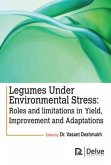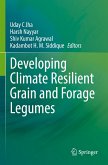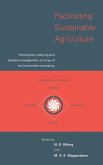This volume provides a wide-ranging survey of all the major grain legumes from the standpoint of both their evolution and their potential for further development and improvement as economically important food crops. The legumes have a vital role to play in both the developed and developing worlds by providing an alternative nitrogen source to the artificial fertilizers, which, although boosting cereal yields, often have had adverse environmental effects. The grain legumes are a valuable crop possessing the ability to fix nitrogen by Rhizobium biosynthesis and thus contribute to the natural nitrogen cycle. The book surveys the changes which have occurred in the course of plant domestication leading to our present pulse crops and oilseed legume crops. The author then discusses the benefits to be gained from evaluation and improvement of grain legume genetic resources. It is through this comparative approach that the overall potential of these crops is highlighted.
Table of contents:
Preface; 1. Introduction - biosystematics of the legumes; 2. The role of grain legumes in the human economy; 3. The groundnut, Arachis hypogaea L.; 4. The New World pulses - Phaseolus species; 5. The Old World pulses - Vigna species; 6. Pulses of the Classical World; 7. The other legume oilseeds; 8. Pigeon pea (Cajanus cajan (L.) Millsp.); 9. Minor grain legumes; 10. Germplasm resources and the future; Bibliography; Index.
This volume provides a survey of all the major grain legumes ñ both their evolution and their potential for further development and improvement as economically important food crops. It surveys the changes which have occurred in plant domestication and discusses the benefits still to be gained from evaluation and improvement of genetic resources.
Hinweis: Dieser Artikel kann nur an eine deutsche Lieferadresse ausgeliefert werden.
Table of contents:
Preface; 1. Introduction - biosystematics of the legumes; 2. The role of grain legumes in the human economy; 3. The groundnut, Arachis hypogaea L.; 4. The New World pulses - Phaseolus species; 5. The Old World pulses - Vigna species; 6. Pulses of the Classical World; 7. The other legume oilseeds; 8. Pigeon pea (Cajanus cajan (L.) Millsp.); 9. Minor grain legumes; 10. Germplasm resources and the future; Bibliography; Index.
This volume provides a survey of all the major grain legumes ñ both their evolution and their potential for further development and improvement as economically important food crops. It surveys the changes which have occurred in plant domestication and discusses the benefits still to be gained from evaluation and improvement of genetic resources.
Hinweis: Dieser Artikel kann nur an eine deutsche Lieferadresse ausgeliefert werden.









